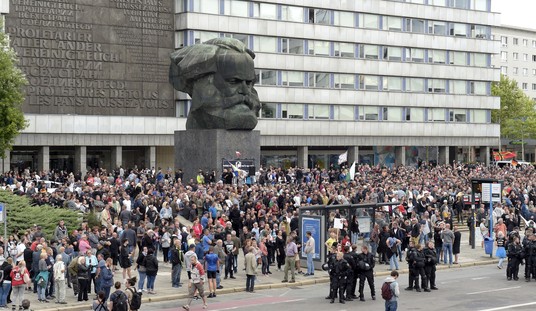WASHINGTON -- As bleak as things look right now, there are reasons to believe we may get through this economic decline sooner than the pessimists' predictions of one to two years.
We've been through 10 recessions since the end of the 1940s, and the records tell us they averaged less than 10 months when they lifted national unemployment to an average of 7.6 percent. We're still a long way from that jobless number.
For nearly two years now, the economic forecasters have been saying we're heading into a recession, and many say we're in a recession now.
We are likely to be in one in this quarter (July, August and September) because exports, the one economic pillar propping up growth, have fallen as a result of a weakening global economy. Retail sales are flat or worse, and factory orders and construction have fallen sharply on top of the credit and debt catastrophe that has struck banks and Main Street businesses.
The definition of a recession is two back-to-back quarters when the economy is not growing. We had one month (last December) of negative growth, but the economy perked up unexpectedly and resumed its growth, despite those who predicted otherwise. We grew at a revised 2.8 percent in the second quarter, largely due to the $1.6 trillion a year in U.S. exports in the global economy -- one of those rarely mentioned "fundamentals" in our economy that John McCain was talking about and seemed to upset Barack Obama.
So the professional pessimists and pundits who said we were in a recession last year and earlier this year were flat wrong.
But even a stopped clock is right at least twice a day, and it looks as if they'll be right in the last half of this year. But how deep will this recession be and how long will it last?
Recommended
We're in the endgame of a furious election battle when Democrats are painting as bleak a picture of the economy as they possibly can. Obama likes to make comparisons to the Great Depression in his campaign speeches, which is silly and irresponsible. At the economy's lowest point in 1932, stocks fell nearly 90 percent. We're a long way from that kind of deep decline.
Then there is another one of those "fundamentals" that McCain was referring to earlier -- the incredibly productive American workforce.
Unemployment has climbed, and we've lost -- and will lose -- several million jobs this year. But unemployment as of August was 6.1 percent -- in sharp contrast to the 9 percent to 10.8 percent levels we endured in the early 1970s and 1980s when interest rates and inflation hit double digits.
But we have several things going for us in this latest economic decline, and chief among them is Fed Chairman Ben Bernanke, who wrote the book on what led to the Great Depression. That's when the Fed tightened the money supply instead of injecting liquidity into the economy's banking institutions -- and then FDR raised taxes.
Bernanke and his economic partner Treasury Secretary Hank Paulson aren't going to make those mistakes. Last week's half-point interest-rate cut will be followed by others, while the Fed and Treasury continue to make money available to keep the nation's lending arteries open until we can work our way out of this trouble.
In the meantime, the Treasury and the Federal Housing Administration have been pushing to renegotiate subprime mortgage loans at the rate of 200,000 a month for creditworthy homeowners who are trying to stay in their homes.
Then there are the underappreciated Bush tax cuts that have helped make our economy more resilient than it otherwise would have been. They helped us bounce back from the 9/11 terrorist attacks when the economy stopped breathing and recover from one financial breakdown after another, natural disasters and now the subprime mortgage and credit debacle.
There are a few other fundamentals at work here that will help us out of this economic hole, like relatively low interest rates, plunging oil prices that are cutting the price of gasoline at the pump, and a real-estate market that is showing glimmers of a comeback.
Pending home sales increased by an unexpected 7.4 percent between July and August, pushing the National Association of Realtors index of pending sales to 93.4 from an upwardly revised reading of 87. That's the highest number since the summer of 2007, and a sign that homebuyers are returning to the market to take advantage of bargain-basement home prices.
Nevertheless, the national mood of gloom and pessimism runs deep as Paulson and his Treasury associate, Neel Kashkari, try to fix this mess.

























Join the conversation as a VIP Member